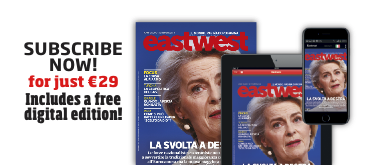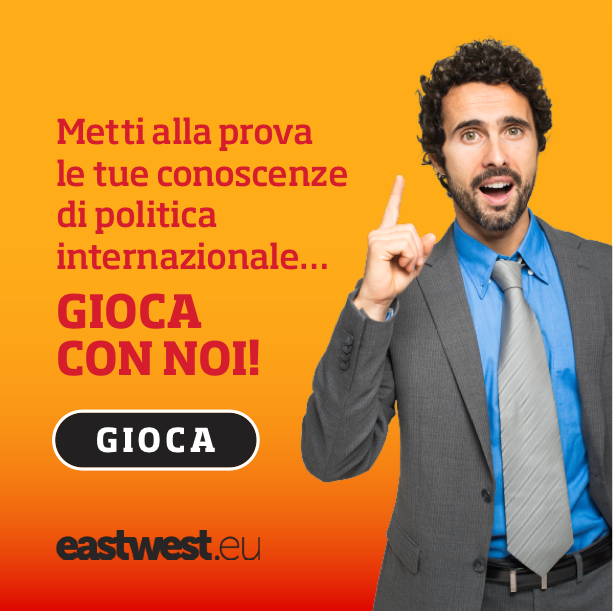One month into Russian invasion, the future of Ukraine still hangs in the balance, but what is certain is that this war already represents a watershed event in world history. What were the most notable firsts of this war? How is the war changing the world we live in?
On February 24, what President Vladimir Putin called a “special military operation” against Ukraine began. Since then, an eventful month has passed, but it was clear from the very beginning that this conflict was going to take unprecedented and unexpected paths. Below, a summary of the most remarkable firsts of the Russo-Ukrainian war.
EU funding the purchase and delivery of weapons to a country at war
On February 28, in a historic move for the bloc, European Commission President Ursula Von Der Leyen announced the decision to finance the purchase and delivery of weapons and other equipment to Ukraine.
The EU treaties prevent the use of regular multi-annual budgets to finance military or defence operations. This has led the EU to draw from off-budget funds, namely the European Peace Facility (EPF), designed to help weak, faltering or failed states in Europe’s neighbouring regions.
Head of diplomacy Josep Borrell described the decision as taboo breaking for the bloc, while aid to Ukraine reached half a billion euros. Even individual European states have taken the decision to send military equipment to Ukraine, often going against their own historical national policies. This brings us to our second important fact.
Countries abandoning neutralist and non-aligned policies
One major change this war has brought is pushing historically neutral countries to abandon their positions to support Ukraine.
The first to turn on Moscow was Switzerland, which decided to adopt EU sanctions against Russia. Sweden and Finland also broke with pacifist tradition by sending funding and military aid to the Ukrainian army. The two even spoke about the possibility of joining NATO, immediately triggering threats from the Kremlin.
Similar shifts in policies were made by Austria, which delivered an extensive aid package, and Ireland, backing EU sanctions against Russia.
In the face of a looming threat at Europe’s doorstep, a resounding U-turn was also made by Germany, which revoked the ban on supplying lethal weapons to conflict zones. This decision, along with the one we will discuss in the following section, mark somehow the end of the Ostpolitik that had so far characterized German foreign policy.
EU countries boosting military spending
Germany, Belgium, Romania, Poland, Italy, Norway, Denmark and Sweden are the European countries that have already announced an increase in defence budgets for 2022, following the wake up call of Russian aggression on Ukraine. They are joined by Latvia, Finland and the Netherlands, who have expressed the need to discuss this possibility as soon as possible.
Among NATO members, very few of these were already spending more than 2% of GDP, the amount recommended by the Alliance.
Related to this, it is worth mentioning the so-called “Strategic Compass“, the EU defence plan approved in these days by the European Council, that, just like a compass, focuses on four directions: act, invest, collaborate, protect. The most controversial point is the creation of a rapid deployment capacity of 5,000 men. Are plans for a European Army back on the table?
Ukrainian refugees welcomed by countries opposing migrant redistribution
The Russian invasion of Ukraine triggered the largest wave of refugees in Europe in decades, with more than 3 million people fleeing the bombs.
In this race for solidarity, the attitude of some countries has not gone unnoticed. Governments that have long opposed the redistribution of migrants are in fact in the forefront of offering asylum to Ukrainian refugees.
How to forget Hungary’s razor-wire fence and closure of the border with Serbia? Or Poland’s recent tensions on its border with Belarus over the uncontrolled flow of incoming migrants?
Whether it is out of a sense of greater empathy for a European population than an Arab or African one, or out of shared bad memories of Soviet aggression and occupation, what is certain is that these countries are showing an unprecedented face, which will surely set a precedent for future discussions on the topic of immigration in Europe.
Modern warfare is also digital
Not only tanks and missiles, the largest war in Europe since WW2 is also being largely fought in the digital dimension and has two main directions.
One is cyber attacks. They have been waged by both countries, but particularly surprising was the intervention of the hacker collective known as Anonymous, which shut down several state-controlled media and websites and leaked confidential intelligence information and data.
In addition, we have disinformation. A war that is documented live minute by minute could certainly not escape the circulation of fake news, but these are only the tip of the iceberg of a bigger problem that many have called Putin’s “cognitive warfare”. Indeed, since the beginning of the “special operation” in Ukraine, the well-known Russian propaganda machine has focused massively on this weapon: information is manipulated, controlled and systemically delivered to the population directly by the State.
It follows that in Putin’s Russia any form of narrative different than the official one cannot find space: 5,000 anti-war protesters have been arrested so far; a new law provides up to 15 years in prison for those who spread “false information” about the military, and independent social networks have been blocked or restricted to better control the flow of information among citizens.
One month into Russian invasion, the future of Ukraine still hangs in the balance, but what is certain is that this war already represents a watershed event in world history. What were the most notable firsts of this war? How is the war changing the world we live in?





